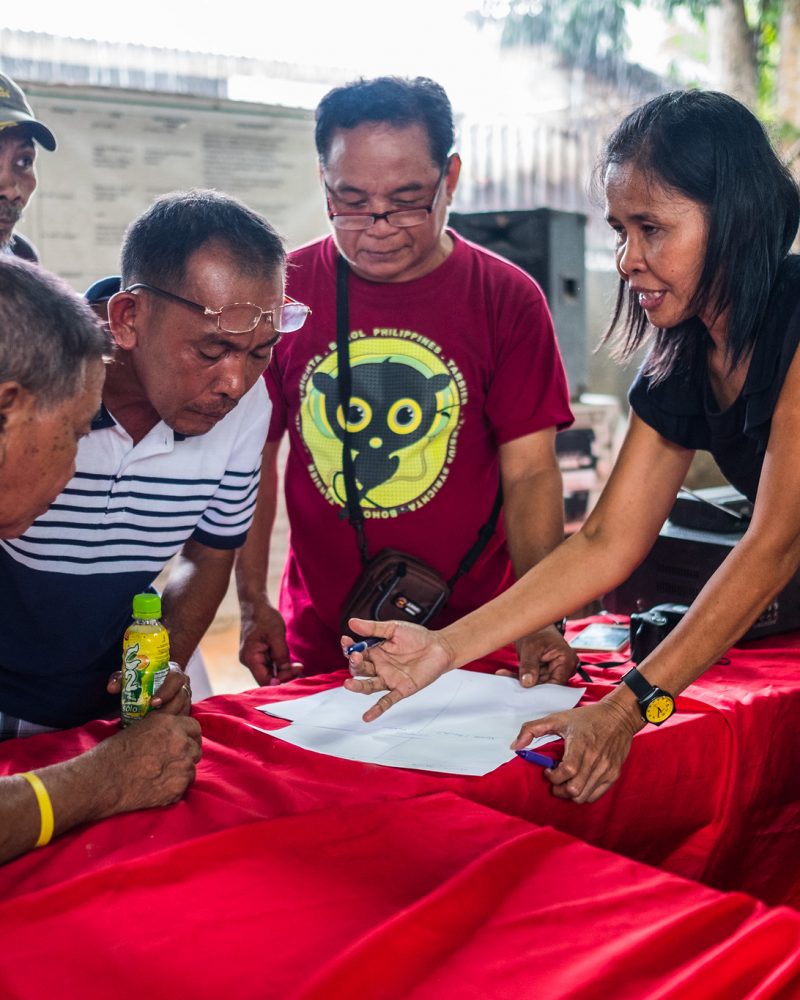This is the final blog in our three-part “Many Ways to Pause and Reflect” series exploring how the U.S. Agency for International Development’s (USAID) Measuring Impact and Measuring Impact II have used pause and reflect practices to go beyond reporting and connect the dots between evidence use, adaptive management, and relationship building. (Read the first and second blogs in the series.)
Over the last ten years, Measuring Impact (MI) and its follow-on Measuring Impact II (MI2) have collaborated with USAID’s Biodiversity Division to help over 100 consortia on the ground design robust, evidence-based interventions addressing threats to biodiversity. Today, we’re seeing the cumulative effect of that systematic approach to design, not only in program impact but also in the generation of new evidence and learning to adapt the next evolution of programming to be more climate-smart.
To support USAID activities, MI and MI2 teams used the Open Standards for the Practice of Conservation (Conservation Standards), a widely adopted approach to plan, manage, and learn from conservation efforts. Sharing this common language and tools across biodiversity programs and contexts enables USAID to analyze trends across the portfolio, including:
- Common threats to biodiversity and approaches to counter them.
- Regional comparisons and shared lessons.
- Evidence gaps and common assumptions that need to be investigated.
‘Going Bigger’ with Climate Stocktaking
Recently, MI2 supported the Biodiversity Division to ‘go bigger’ with its analysis to understand how biodiversity programming was aligned with the Agency’s Climate Strategy goals, and how it could better mainstream climate considerations in its programming. In the summer and fall of 2022, the MI2 team took stock of the outputs of MI and MI2’s decade of support to over 100 activities. This global, portfolio-level reflection was similar to the Agency’s mid-course stocktakings, during which USAID and partners meet to consider their progress based on evidence, identify lessons learned, and consider adaptations for the future.
As Biodiversity Division staff paused to reflect on their progress and plan to support the Agency’s Climate Strategy, they needed to understand where the portfolio currently stands and to set goals for the future. MI2 staff gathered and analyzed a collection of over 900 problem analysis and theory of change diagrams from Biodiversity and integrated activities. Because of the systematic approach to documenting programming assumptions in these diagrams, MI2 could efficiently identify trends for a global scale pause and reflect.
We found that:
- Almost two-thirds of activities had goals that included adaptation to or mitigation of climate change.
- Forty-five percent (nearly half) of activities identified climate change threats to their objectives, however, many of them used generic language with little connection to specific impacts, drivers, or goals.
- One-third of activities planned interventions to address climate change impacts on their programs.
To better align with USAID’s new Climate Strategy, most activities could be more explicit about climate goals and threats, and identify and invest in responsive interventions. MI2 is working with the Biodiversity Division to develop, test, and refine practical guidance for teams to incorporate climate change impacts fully into their planning decisions. When teams plan for climate change, their activity impacts can endure beyond USAID support一driving progress beyond programs.
Shaping Priorities for Climate and Biodiversity Guidance
The learning doesn’t stop there. With this understanding of impacts and gaps, the Biodiversity Division can forecast learning and evidence needs and track implementation of the Biodiversity Policy, including climate integration. For example, in the broader conservation community many interventions seek to build the resilience of specific ecosystems and species to current and future climate impacts (e.g., developing reef structures in areas where sea levels will rise); that is less common in USAID currently and could be a new direction for the Agency. With the evidence and learning from the stocktaking in hand, MI2 is helping the Biodiversity Division and partners adapt programming approaches to include building ecosystem resilience and monitoring effectiveness.
This type of high-level pause and reflect can also help other USAID stakeholders translate Agency policies and priorities into programming over time. The Agency Adaptation Working Group can better understand how climate adaptation is integrated into biodiversity programming and identify support needs. At the regional level, Bureaus can identify specific climate threats relevant to regional and bilateral programming. At the Mission level, biodiversity teams can use the information as a baseline for their programming, and identify promising strategies, evidence gaps, and best practices. Meanwhile, other sector teams can use this approach to understand the practical impacts of climate change on communities and the ecosystems on which those communities depend. Working together, we can use this learning to achieve progress beyond programs.



